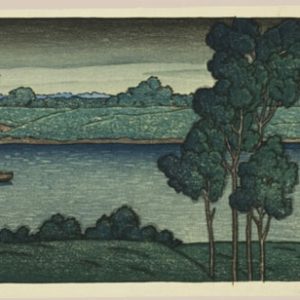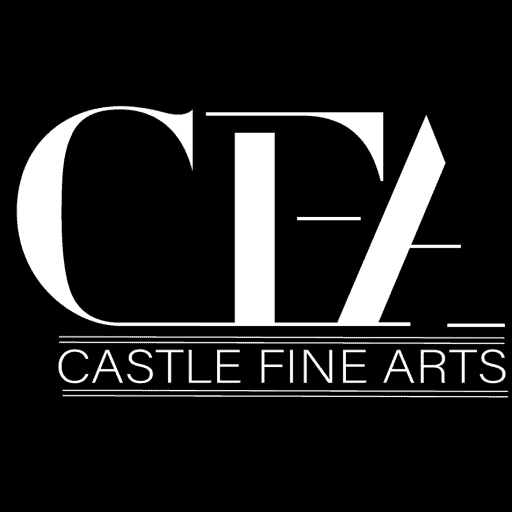Chiura Obata, San Francisco From The Berkeley Hills – Original Painting
Category:
Price:
$30,000.00
Status:
Catalog ID
A2927
Artist
Chiura Obata
Title
San Francisco From The Berkeley Hills - Original Painting
Medium
Original Watercolor on Silk
Series Title
Berkeley and Surrounding Areas
Edition
Original
Date
1954
Publisher
The Artist
Reference No
Size
15 -1/2 x 20 -1/2 "
Condition
Very fine.
Price
$30,000.00
Shipping (US)
45.00
Shipping (Non-US)
95.00
NOTES:
Notes: Signed in black ink with artist red seal; lower right. Provenance: Nikko Art Gallery, Berkeley California. Previously owned by an ex-student of Mr. Obata.
A scenic view of San Francisco, includes Treasure Island (Yerba Buena Island) and both the Golden Gate and Bay Bridge. The Shipping docks are also captured in the lower portion of painting, with towering eucalyptus trees dominating the right portion of the work.
As noted in the book, Obata's Yosemite: 'The color of water he used might be called "Obata blue," so frequently does it appear in his paintings. Obata looked to the Tosa School, whose artists he considered the finest colorists of Japan, for selecting and dissolving pigments. Following formulas some of which were more than a thousand years old, Obata ground his own paints from a variety of materials, including precious and semiprecious stones, flower petals, and oyster shells. For his blues, Obata ground lapis lazuli; for greens, he ground malachite, turquoise, or peacock stone. He is reputed to have used ruby dust for special reds - at a cost of seven hundred dollars for a tiny vial.
In one respect Obata never wavered; he insisted until his death on employing the best materials Japan had to offer. His sumi was of a type made in the mountains of Japan from a secret slow-burning carbonization of pine; his brushes were constructed by hand with animal furs such as rabbit, fox, sheep, badger, and bear. Even Obata's water came from the purest sources he could find, preferably mountain lakes and streams. In the 1930's he made pilgrimages to Fern Spring in Yosemite Valley to collect its crystalline water, which he used to mix with his sumi.'
Obata was one of most prominent practitioners of the modern nihonga (Japanese Painting) movement, which sought to reconcile traditional Japanese and contemporary European schools of art. As a professor of art (1932–1942/1945–1954) for the University of California at Berkeley, Obata taught thousands of students about Asian culture and Buddhist philosophies of respect for nature, selflessness, and pacifism. The East West Art Society, co-founded by Obata in 1921, promoted his belief that art could provide the common ground necessary to transcend the barriers of nationalism and racism. For Obata, “Great Nature” provided important philosophical lessons regarding permanence and impermanence, and also served as a source of spiritual enlightenment. Although he never practiced any organized religion, Obata observed, “when I enter into the bosom of Great Nature I believe in the blessing of nature as a kind of God to me.”
Guaranteed safe checkout









